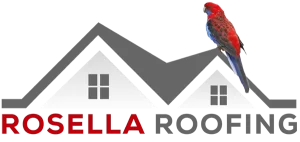Have you tried to picture something like the sun shining down on a vibrant landscape, where homeowners are not just looking to put a roof over their heads but are also keen on making a positive impact on the environment. In this era of sustainability and innovation, the roofing industry in Australia is stepping up to the plate, embracing a wave of change that’s as refreshing as a cool breeze on a hot summer day. Builders and homeowners alike are diving into solutions that enhance the beauty of their properties while championing eco-friendly practices and energy efficiency. This exciting evolution is ushering in a new age of roofing, where sustainable materials and smart technologies come together to redefine what it means to have a roof over your head. It’s all about creating spaces that are not only functional but also kind to our planet, reflecting the true Aussie ethos of looking after our land for future generations.
Key Trends in Roofing
Sustainable Materials
One of the most notable trends is the growing preference for sustainable materials. Eco-friendly options, such as recycled shingles and green roofs, are becoming increasingly popular among environmentally conscious homeowners. These materials not only help reduce waste but also improve energy efficiency by providing better insulation and minimizing heat absorption. For example, green roofs, which are covered with vegetation, can significantly mitigate urban heat islands and enhance air quality (CSIRO, 2023).
Smart Roofing Technologies
In addition to sustainable materials, smart roofing technologies are making a significant impact in the industry. Innovations such as roofing systems equipped with sensors that monitor temperature, moisture levels, and structural integrity are gaining traction. By utilizing Internet of Things (IoT) devices, homeowners can access real-time data about their roofs, enabling proactive maintenance and early detection of potential issues. This not only extends the lifespan of the roof but also enhances overall home safety and efficiency (Smart Cities Council Australia, 2023).
Notable Roofing Trends to Consider
- Eco-Friendly Materials: The rise of recycled shingles, metal roofing, and sustainable wood options (Green Building Council of Australia, 2023).
- Green Roofs: Vegetative roofing systems that provide insulation and reduce urban heat.
- Solar Roofing: Integration of solar panels and solar shingles for energy generation.
- Cool Roofing: Reflective materials that reduce heat absorption and lower cooling costs.
- Smart Technology: IoT-enabled roofs that monitor conditions and alert homeowners to issues.
- Energy-Efficient Designs: Roofs designed to optimize airflow and insulation for better energy performance.
- Rainwater Harvesting Systems: Roof designs that facilitate the collection and reuse of rainwater.
Government Support and Industry Adaptation
Government incentives and regulations are also playing a crucial role in promoting these roofing trends. Many Australian states offer rebates and grants for homeowners who opt for energy-efficient roofing solutions, making it easier for individuals to invest in sustainable options (Australian Renewable Energy Agency, 2023). As awareness grows, builders and contractors are adapting their practices to meet the increasing demand for eco-friendly and technologically advanced roofing systems.
Embracing the Future of Roofing
The roofing industry in Australia stands at a pivotal moment, with sustainable and smart technologies leading the way. By embracing these innovations, homeowners can enhance the value and efficiency of their properties while contributing to a healthier planet. As we look to the future, it is clear that integrating sustainability and technology in roofing will be essential in shaping the homes of tomorrow. For anyone considering a roofing project, staying informed about these trends is vital for making choices that align with personal values and environmental responsibility. Embrace the future of roofing and join the movement toward a more sustainable and intelligent built environment (Sustainable Homes Australia, 2023).


